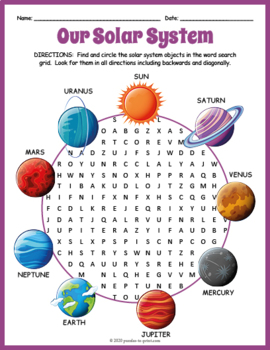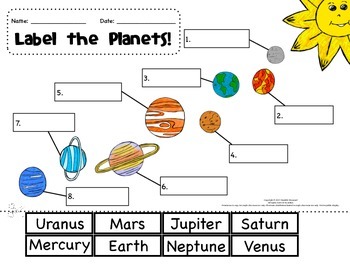

This is because the gravitational force a planet exerts upon an object at the planet’s surface is proportional to its mass and to the inverse of the planet’s radius squared.

Although Saturn, Uranus, and Neptune are also very massive planets, their gravitational forces are about the same as Earth. The planet with the strongest gravitational attraction at its surface is Jupiter. Uranus, Neptune, Earth, Venus, Mars, and Pluto are orders of magnitude less massive. Jupiter is by far the most massive planet Saturn trails it. Saturn is the least dense planet it would float on water. The outer, gaseous planets are much less dense than the inner, rocky planets. Differences occur when the greenhouse effect warms a planet (like Venus) surrounded by a thick atmosphere. Generally, the farther from the Sun, the cooler the planet. They are mostly huge, mostly gaseous, ringed, and have many moons (again, the exception is Pluto, the dwarf planet, which is small, rocky, and has four moons).
 The outer planets include: Jupiter, Saturn, Uranus, Neptune, and Pluto (a dwarf planet). They are relatively small, composed mostly of rock, and have few or no moons. The inner planets are: Mercury, Venus, Earth, and Mars. The inner planets (those planets that orbit close to the sun) are quite different from the outer planets (those planets that orbit far from the sun). Jupiter is so big that all the other planets could fit inside it. It is followed by Saturn, Uranus, Neptune, Earth, Venus, Mars, Mercury, and finally, tiny Pluto (the largest of the dwarf planets). These objects all orbit the sun in roughly circular orbits that lie in the same plane, the ecliptic (Pluto is an exception it has an elliptical orbit tilted over 17° from the ecliptic).Įasy ways to remember the order of the planets (plus Pluto) are the mnemonics: “My Very Excellent Mother Just Sent Us Nine Pizzas” and “My Very Easy Method Just Simplifies Us Naming Planets” The first letter of each of these words represents a planet - in the correct order. A belt of asteroids (minor planets made of rock and metal) lies between Mars and Jupiter. Another large body is Pluto, now classified as a dwarf planet or plutoid. The eight planets that orbit the sun are (in order from the sun): Mercury, Venus, Earth, Mars, Jupiter, Saturn, Uranus, Neptune. The sun is the center of our solar system the planets, their moons, a belt of asteroids, comets, and other rocks and gas orbit the sun. Our solar system consists of the sun, eight planets, moons, many dwarf planets (or plutoids), an asteroid belt, comets, meteors, and others.
The outer planets include: Jupiter, Saturn, Uranus, Neptune, and Pluto (a dwarf planet). They are relatively small, composed mostly of rock, and have few or no moons. The inner planets are: Mercury, Venus, Earth, and Mars. The inner planets (those planets that orbit close to the sun) are quite different from the outer planets (those planets that orbit far from the sun). Jupiter is so big that all the other planets could fit inside it. It is followed by Saturn, Uranus, Neptune, Earth, Venus, Mars, Mercury, and finally, tiny Pluto (the largest of the dwarf planets). These objects all orbit the sun in roughly circular orbits that lie in the same plane, the ecliptic (Pluto is an exception it has an elliptical orbit tilted over 17° from the ecliptic).Įasy ways to remember the order of the planets (plus Pluto) are the mnemonics: “My Very Excellent Mother Just Sent Us Nine Pizzas” and “My Very Easy Method Just Simplifies Us Naming Planets” The first letter of each of these words represents a planet - in the correct order. A belt of asteroids (minor planets made of rock and metal) lies between Mars and Jupiter. Another large body is Pluto, now classified as a dwarf planet or plutoid. The eight planets that orbit the sun are (in order from the sun): Mercury, Venus, Earth, Mars, Jupiter, Saturn, Uranus, Neptune. The sun is the center of our solar system the planets, their moons, a belt of asteroids, comets, and other rocks and gas orbit the sun. Our solar system consists of the sun, eight planets, moons, many dwarf planets (or plutoids), an asteroid belt, comets, meteors, and others.







 0 kommentar(er)
0 kommentar(er)
